
Feature



Lonely Space: An Indie Immersive‑Sim That Puts You Alone on a Silent Space Station
Lonely Space is a hand‑crafted sci‑fi immersive sim from small indie studio HC Games that drops you awake and alone on the Cassiopeia space station and asks you to survive, investigate, and decide what kind of person you’ll become in the void — a tense, DIY love letter to System Shock, Prey and classic single‑player sims that wears its influences proudly while carving its own, slightly retro future.
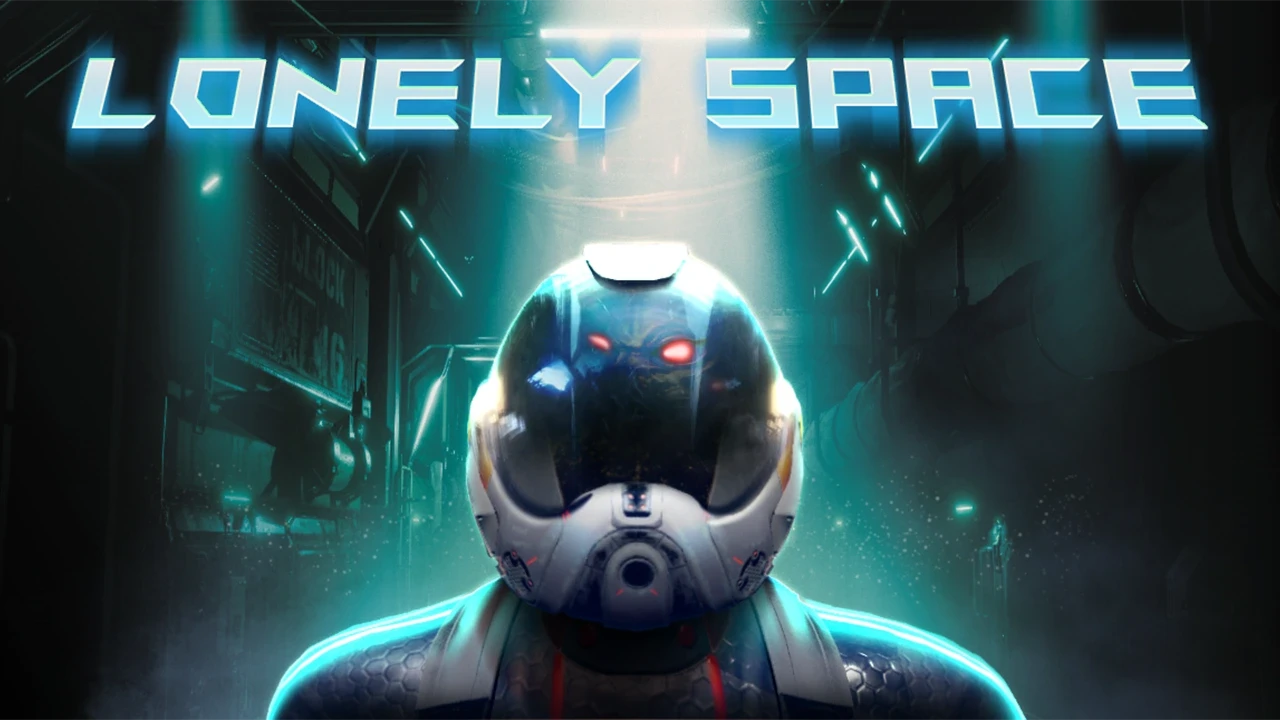
The game's cover art showing the dark space station in the background. Image credit: HC-Games
From first boot the game makes its priorities clear: atmosphere, systems, and player choice. You begin the story waking from hibernation in a docking bay to find the station empty and its corridors whispering with secrets; the plot is driven by environmental storytelling, logs, and the slow unfolding of corporate intrigue that ties into questions about technology, identity, and isolation. The station itself functions like a character — interconnected modules, reroutable systems and reactive AI that let you approach problems through stealth, hacking, brute force, or a creative mix of the three.
HC Games and the Dev Back Story
HC Games started life as a solo project by an independent developer using the handle “katische,” who later expanded the team with a couple of 3D artists to refine the visuals and expand content; Lonely Space remains the studio’s debut, crafted with the careful, iterative focus you’d expect from a tiny team trying to revive complex old‑school simulation in a modern engine. The developer has been open about the long haul of indie production: months‑to‑years of solo design followed by targeted growth to fill artistic and technical gaps, and a willingness to listen to community feedback as the game evolves.
Gameplay that Asks You to Think like an Engineer, Thief, and Survivor
Mechanically, Lonely Space blends survival inventory decisions, emergent systems interactions, and a multi‑faceted skill tree that lets players optimize for hacking, combat, stealth, or psionic talents; these choices matter because the station’s systems are malleable.
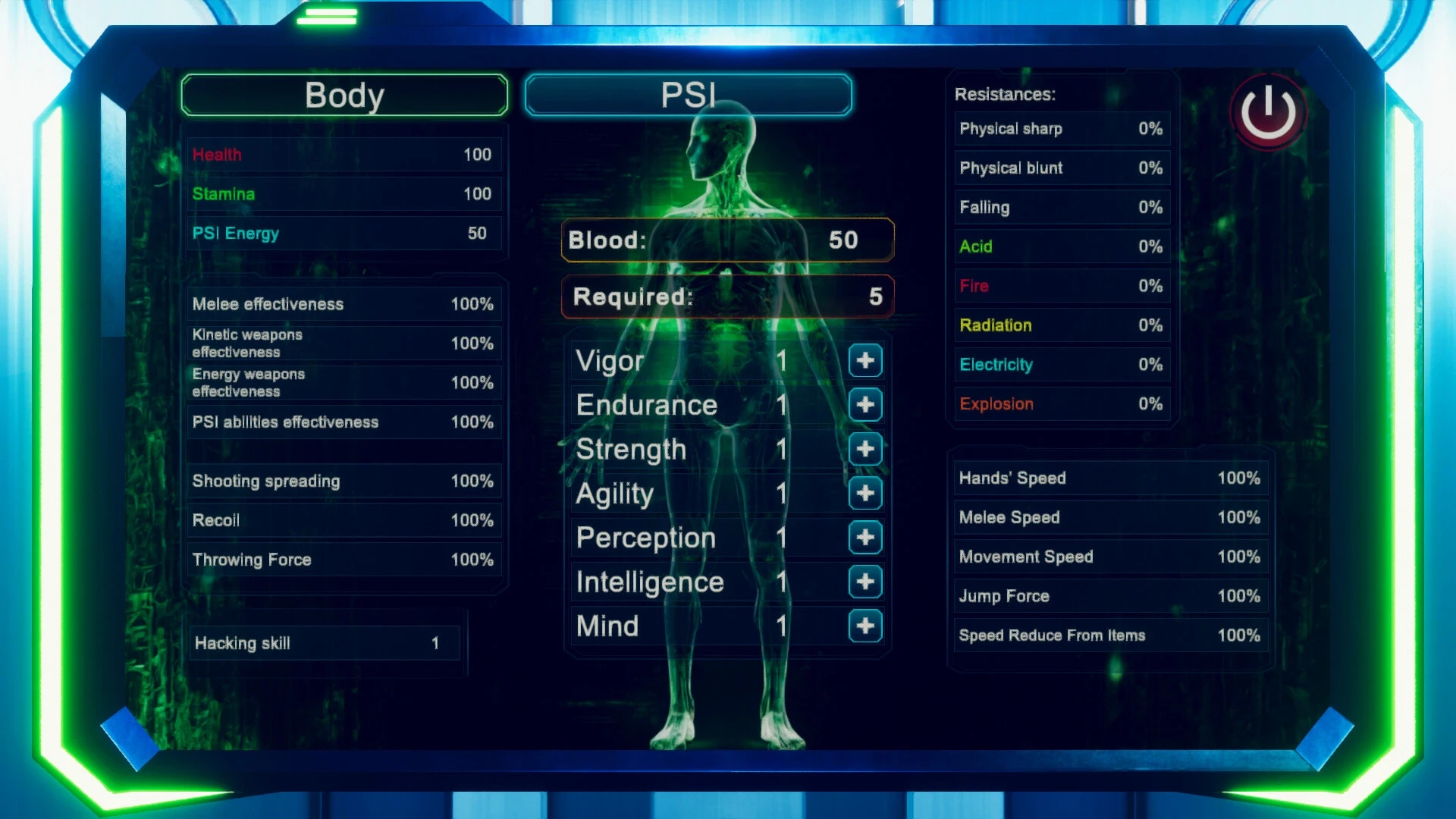
The game's UI showing the character's vitals and abilities. Image credit: HC-Games
Hacking is presented as more than a minigame — multiple hacking systems with distinct mechanics serve as believable puzzles that open doors and rewrite the environment, rewarding players who invest in tech skills. Combat mixes melee, kinetic and sci‑fi weaponry with add‑ons and mods, while resource scarcity and inventory trade-offs channel the tense planning of survival classics.
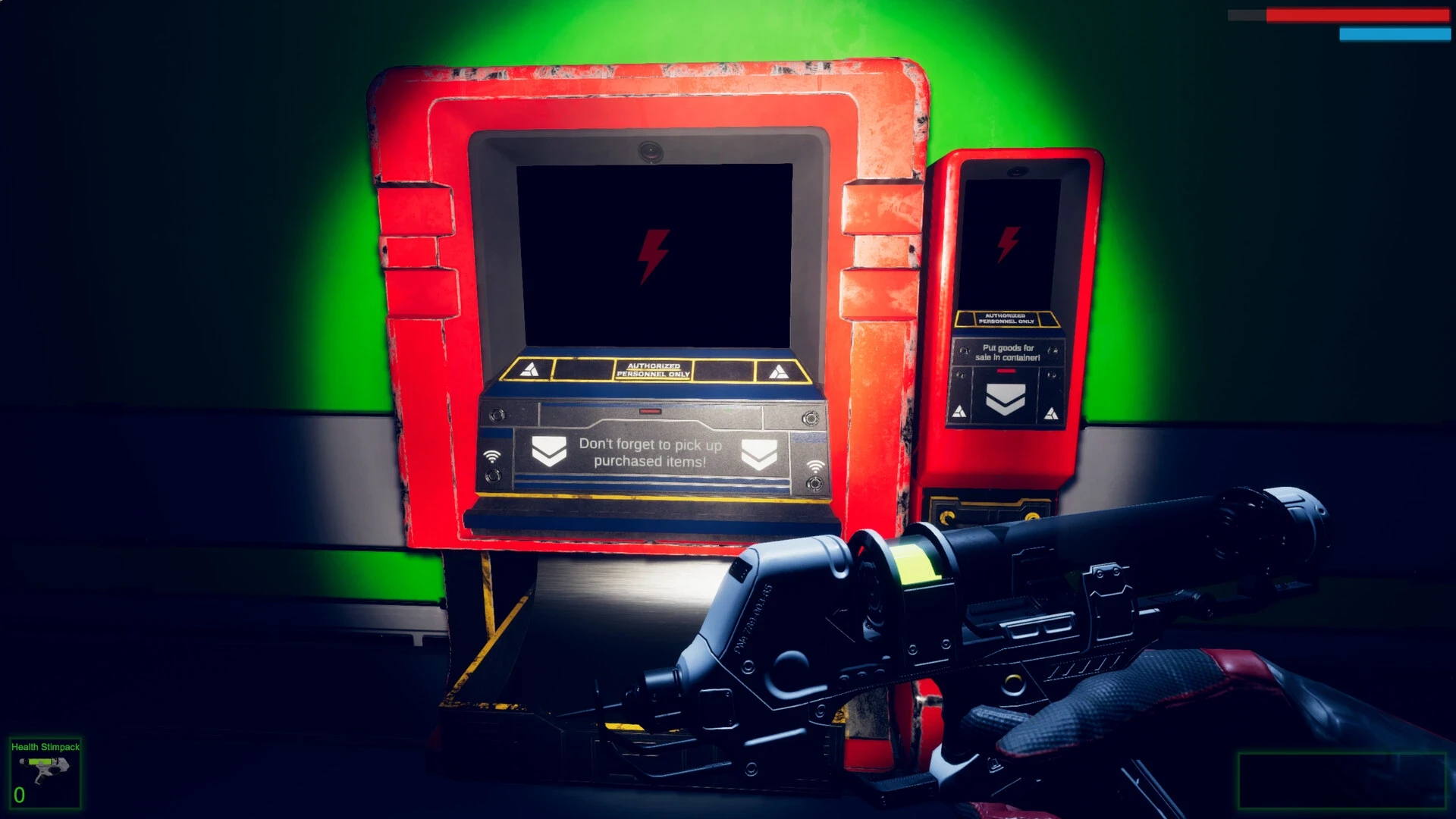
A screen shot showing an interactive panel where upgrades can be obtained. Image credit: HC-Games
The horror in Lonely Space is less about jump scares and more about being the last conscious person in a place that used to hum with life. The game leverages lighting, sound, and environmental decay to create dread: corridors with dead consoles, muffled announcements, and the pervasive sense that anything you do could wake something worse. Players and early demos have emphasized how haze and limited visibility amplify this tone, which some found atmospheric and others found occasionally frustrating for clarity in combat.
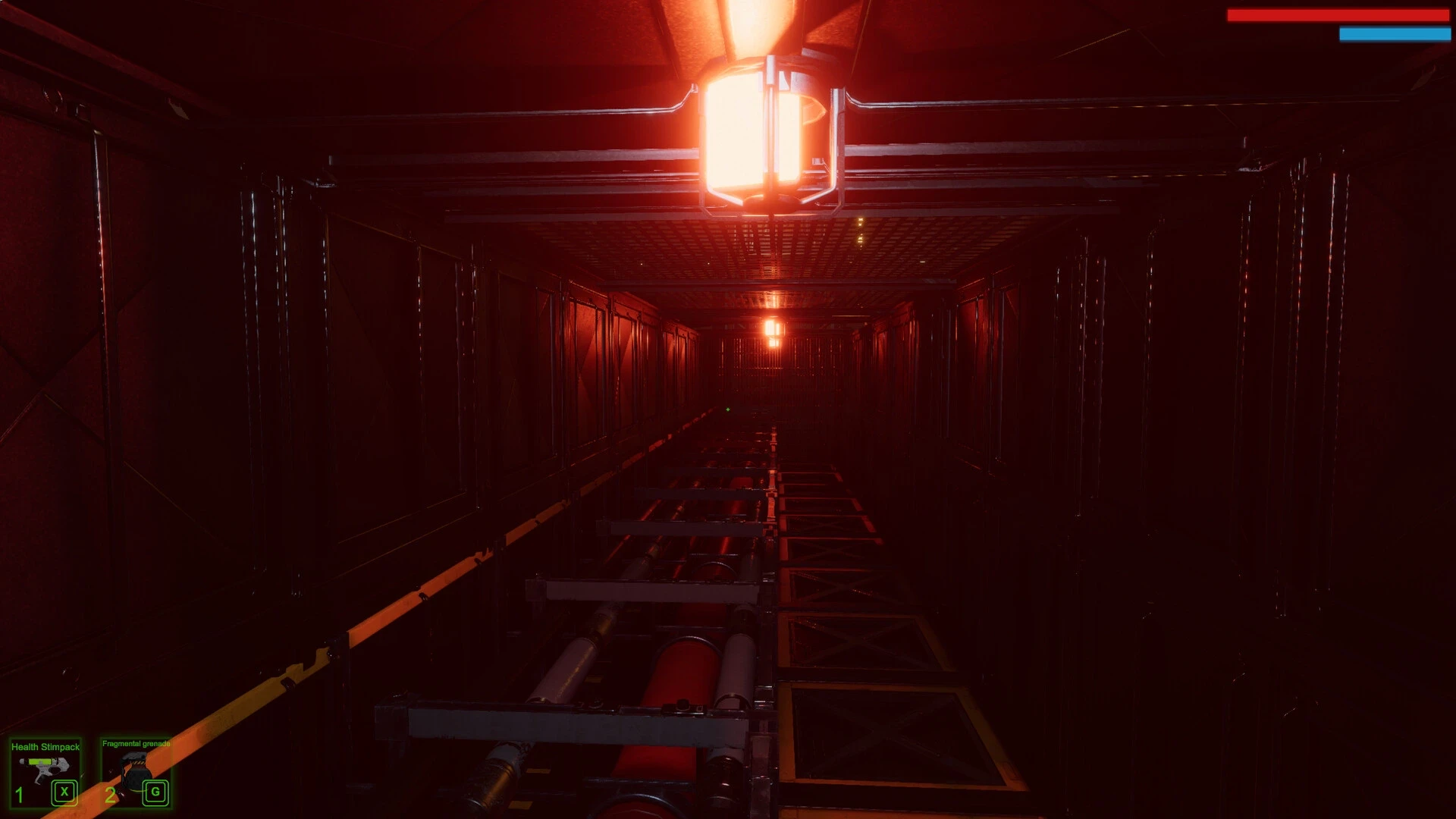
Screen shot from the game portraying the eerie environment of the isolated space station. Image credit: HC-Games
Narrative Threads and the Weight of Isolation
Narratively Lonely Space uses the station’s logs, terminals and scattered notes to tease out corporate secrets and ethical dilemmas. The plot’s emphasis on isolation dovetails with mechanics: decisions about whether to revive systems, reroute power, or leave sections sealed are not only tactical but narrative — each toggled breaker changes who you can save, what truths come to light, and which factions learn your name. The game also plays with identity themes: cloning, corporate experiments, and questions about what it means to be “alive” in a world where bodies and consciousness can be moved and traded.
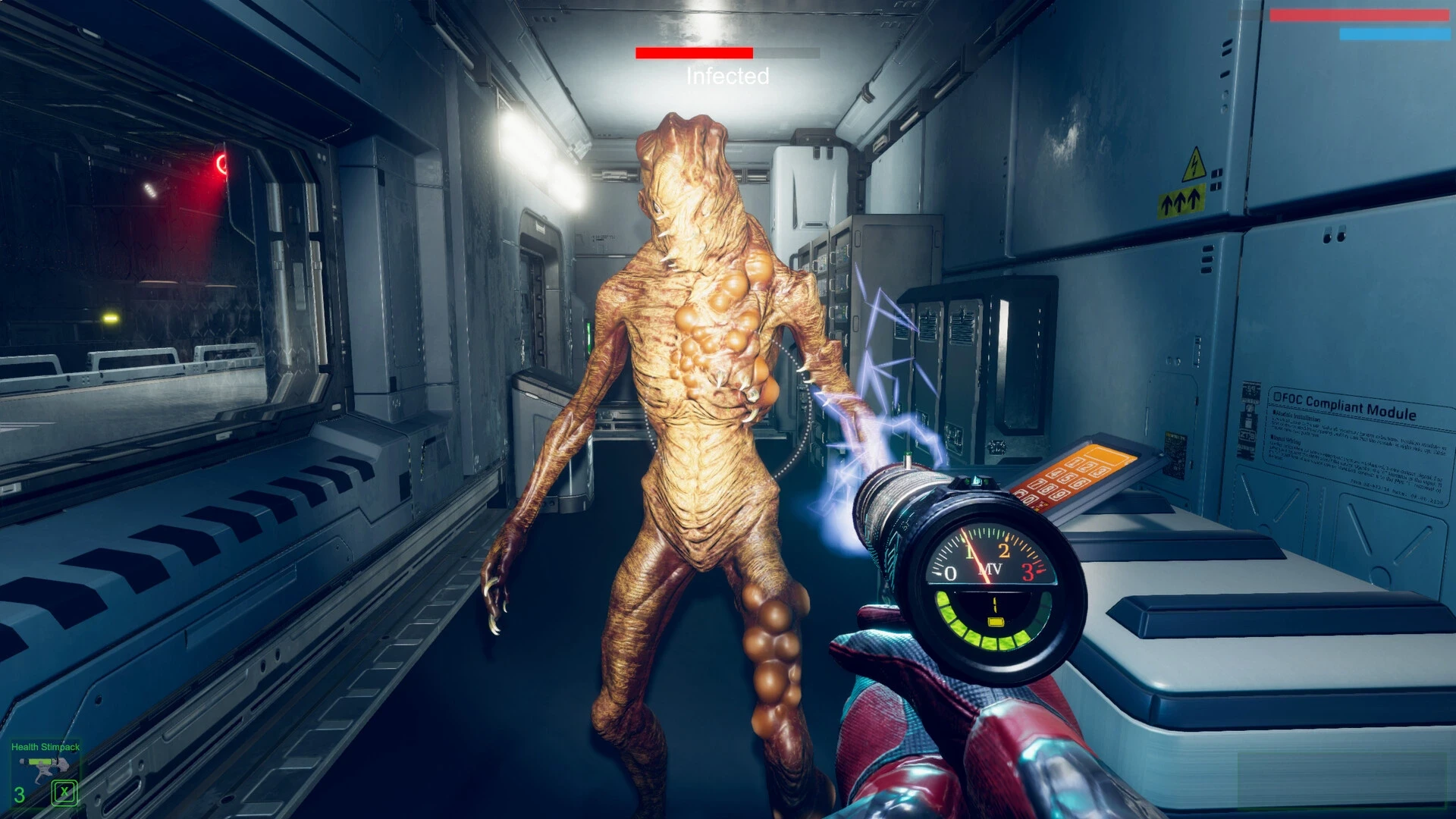
The enemies in the game range from fellow crew members to non-human intruders. Image credit: HC-Games
Community Driven Development and the Kickstarter Lift
The Lonely Space team is preparing to launch a Kickstarter campaign soon to help fund the project to the level of polish they envision. In the meantime the developers have released playable demos (available on Steam and Itch.io) and shown the game at Steam events to gather community feedback. That dialogue has been largely positive—players consistently praise the game’s atmosphere and emergent systems while requesting improvements to visual clarity, navigation, and combat balance—and the team has acknowledged those requests and pledged to address them in upcoming updates.
Visual Style and Audio Design: Hand‑Made Sci‑Fi

Song of Oil and Flame. By HC-Games. From @LonelySpaceTheGame
Rather than chasing photorealism, Lonely Space leans into a stylized, hand‑crafted aesthetic: a combination of 3D spaces with artful lighting and texture work that underscores the game’s slightly retro, “used future” vibe. The result is a station that feels lived‑in and worn, with audio cues and sparse music amplifying the sense of being small and alone inside a vast machine. Devlogs and trailers on the official channel show the team polishing ambient soundscapes, enemy callouts and reactive audio to make every flicker and squeal meaningful.
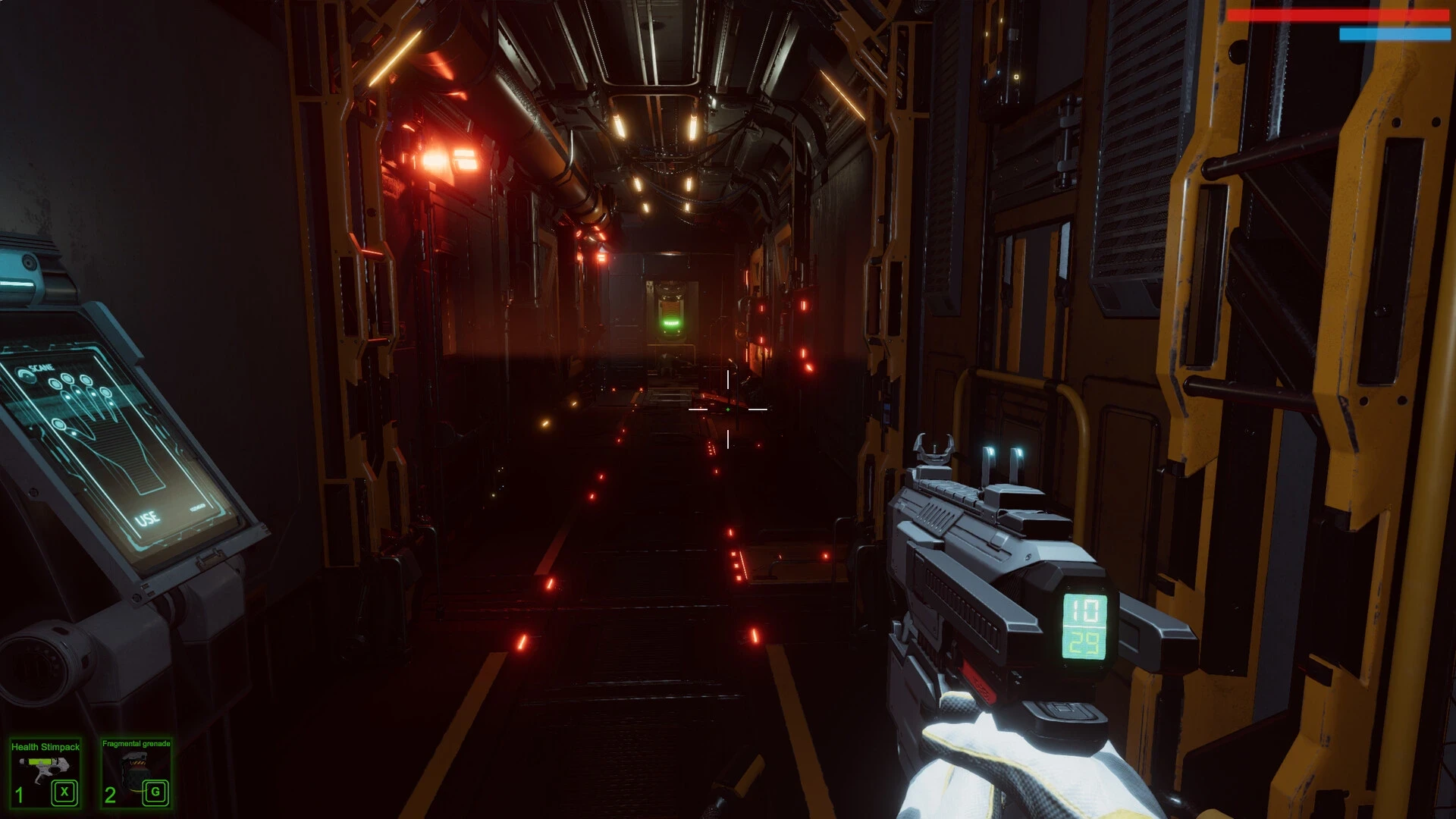
The exploration element of the game promises to be a vast and intense experience. Image credit: HC-Games
Where the Game Sits in the Modern Space‑Sci‑Fi Gaming Landscape
In an era that alternates between huge multiplayer sandboxes and tightly scripted single‑player spectacles, Lonely Space lands as a niche but sincere revival of system‑heavy immersion in a sci‑fi shell. It’s squarely aimed at players who loved the freedom and consequence of older immersive sims but want fresh worldbuilding and a contemporary indie sensibility; it is not trying to be a blockbuster AAA title but rather a compact, intense experience that rewards curiosity and patience.
What the Community Says and What to Expect Next
Early access and demo impressions reveal a community invested in the game’s promise; Steam discussions and comment threads show players excited about the depth of systems but offering constructive critiques about visual clarity and balance, and the developers have been responsive in public posts. Updates and devlogs on YouTube and the game’s Steam page signal continued polishing, new content and bug fixes as the team prepares broader release builds.
Lonely Space’s Potential and Caveats
The game’s strengths are obvious: richly interactive systems, a melancholy sci‑fi atmosphere, and a clear love for smart, consequential design. The caveats are also real: the small team size means longer timelines and incremental improvements rather than rapid feature growth, and some early players note that atmospheric effects can sometimes complicate readability during tense moments. Those trade offs are typical of ambitious indie sims, and the developer’s public responsiveness is a positive sign that the project will continue to refine what works best.
For now, if you care about atmospheric, choice‑heavy sci‑fi that rewards meticulous exploration and moral curiosity, Lonely Space looks like a promising new star in the indie constellation.
Lonely Space is a hand‑crafted sci‑fi immersive sim from small indie studio HC Games that drops you awake and alone on the Cassiopeia space station and asks you to survive, investigate, and decide what kind of person you’ll become in the void — a tense, DIY love letter to System Shock, Prey and classic single‑player sims that wears its influences proudly while carving its own, slightly retro future.

The game's cover art showing the dark space station in the background. Image credit: HC-Games
From first boot the game makes its priorities clear: atmosphere, systems, and player choice. You begin the story waking from hibernation in a docking bay to find the station empty and its corridors whispering with secrets; the plot is driven by environmental storytelling, logs, and the slow unfolding of corporate intrigue that ties into questions about technology, identity, and isolation. The station itself functions like a character — interconnected modules, reroutable systems and reactive AI that let you approach problems through stealth, hacking, brute force, or a creative mix of the three.
HC Games and the Dev Back Story
HC Games started life as a solo project by an independent developer using the handle “katische,” who later expanded the team with a couple of 3D artists to refine the visuals and expand content; Lonely Space remains the studio’s debut, crafted with the careful, iterative focus you’d expect from a tiny team trying to revive complex old‑school simulation in a modern engine. The developer has been open about the long haul of indie production: months‑to‑years of solo design followed by targeted growth to fill artistic and technical gaps, and a willingness to listen to community feedback as the game evolves.
Gameplay that Asks You to Think like an Engineer, Thief, and Survivor
Mechanically, Lonely Space blends survival inventory decisions, emergent systems interactions, and a multi‑faceted skill tree that lets players optimize for hacking, combat, stealth, or psionic talents; these choices matter because the station’s systems are malleable.

The game's UI showing the character's vitals and abilities. Image credit: HC-Games
Hacking is presented as more than a minigame — multiple hacking systems with distinct mechanics serve as believable puzzles that open doors and rewrite the environment, rewarding players who invest in tech skills. Combat mixes melee, kinetic and sci‑fi weaponry with add‑ons and mods, while resource scarcity and inventory trade-offs channel the tense planning of survival classics.

A screen shot showing an interactive panel where upgrades can be obtained. Image credit: HC-Games
The horror in Lonely Space is less about jump scares and more about being the last conscious person in a place that used to hum with life. The game leverages lighting, sound, and environmental decay to create dread: corridors with dead consoles, muffled announcements, and the pervasive sense that anything you do could wake something worse. Players and early demos have emphasized how haze and limited visibility amplify this tone, which some found atmospheric and others found occasionally frustrating for clarity in combat.

Screen shot from the game portraying the eerie environment of the isolated space station. Image credit: HC-Games
Narrative Threads and the Weight of Isolation
Narratively Lonely Space uses the station’s logs, terminals and scattered notes to tease out corporate secrets and ethical dilemmas. The plot’s emphasis on isolation dovetails with mechanics: decisions about whether to revive systems, reroute power, or leave sections sealed are not only tactical but narrative — each toggled breaker changes who you can save, what truths come to light, and which factions learn your name. The game also plays with identity themes: cloning, corporate experiments, and questions about what it means to be “alive” in a world where bodies and consciousness can be moved and traded.

The enemies in the game range from fellow crew members to non-human intruders. Image credit: HC-Games
Community Driven Development and the Kickstarter Lift
The Lonely Space team is preparing to launch a Kickstarter campaign soon to help fund the project to the level of polish they envision. In the meantime the developers have released playable demos (available on Steam and Itch.io) and shown the game at Steam events to gather community feedback. That dialogue has been largely positive—players consistently praise the game’s atmosphere and emergent systems while requesting improvements to visual clarity, navigation, and combat balance—and the team has acknowledged those requests and pledged to address them in upcoming updates.
Visual Style and Audio Design: Hand‑Made Sci‑Fi

Song of Oil and Flame. By HC-Games. From @LonelySpaceTheGame
Rather than chasing photorealism, Lonely Space leans into a stylized, hand‑crafted aesthetic: a combination of 3D spaces with artful lighting and texture work that underscores the game’s slightly retro, “used future” vibe. The result is a station that feels lived‑in and worn, with audio cues and sparse music amplifying the sense of being small and alone inside a vast machine. Devlogs and trailers on the official channel show the team polishing ambient soundscapes, enemy callouts and reactive audio to make every flicker and squeal meaningful.

The exploration element of the game promises to be a vast and intense experience. Image credit: HC-Games
Where the Game Sits in the Modern Space‑Sci‑Fi Gaming Landscape
In an era that alternates between huge multiplayer sandboxes and tightly scripted single‑player spectacles, Lonely Space lands as a niche but sincere revival of system‑heavy immersion in a sci‑fi shell. It’s squarely aimed at players who loved the freedom and consequence of older immersive sims but want fresh worldbuilding and a contemporary indie sensibility; it is not trying to be a blockbuster AAA title but rather a compact, intense experience that rewards curiosity and patience.
What the Community Says and What to Expect Next
Early access and demo impressions reveal a community invested in the game’s promise; Steam discussions and comment threads show players excited about the depth of systems but offering constructive critiques about visual clarity and balance, and the developers have been responsive in public posts. Updates and devlogs on YouTube and the game’s Steam page signal continued polishing, new content and bug fixes as the team prepares broader release builds.
Lonely Space’s Potential and Caveats
The game’s strengths are obvious: richly interactive systems, a melancholy sci‑fi atmosphere, and a clear love for smart, consequential design. The caveats are also real: the small team size means longer timelines and incremental improvements rather than rapid feature growth, and some early players note that atmospheric effects can sometimes complicate readability during tense moments. Those trade offs are typical of ambitious indie sims, and the developer’s public responsiveness is a positive sign that the project will continue to refine what works best.
For now, if you care about atmospheric, choice‑heavy sci‑fi that rewards meticulous exploration and moral curiosity, Lonely Space looks like a promising new star in the indie constellation.














Comments
Please be kind and considerate. Any abusive or offensive comments will be sent out the airlock! Thank You.
Please be kind and considerate. Any abusive or offensive comments will be sent out the airlock! Thank You.
Please be kind and considerate. Any abusive or offensive comments will be sent out the airlock! Thank You.
Banner Image - Lonely Space promo image - https://impress.games/press-kit/hc-games/lonely-space - Copyright: HC-Games
Main Article - All images and media are the property of HC-Games.







